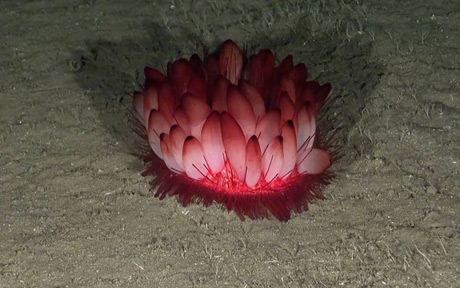What's Happening at Discovery Diving
Get all the latest info from our Instructors and Staff on our SCUBA Classes, Charters, Equipment and Special Events.
Strange marine animals found around the Canary Islands
- Font size: Larger Smaller
- Hits: 1966
- 0 Comments
- Subscribe to this entry
- Bookmark
Marine conservation group Oceana have found an amazing array of marine life in their expedition around the Canary Islands.
Using ROVs (remotely operated underwater vehicles) down to 1000 m as well as scuba divers to shallow depths, they documented large colonies of deep-sea white coral, crystal aggregations of sponges, dense forests of black corals, oceanic puffers, giant foraminifera, carnivorous sponges and sharks, as well as many other biological communities and species in the south of the El Hierro Island.

Aggregation of Oceanic puffers (Lagocephalus lagocephalus lagocephalus) with reproductive purposes. El Desierto, El Hierro, Canary Islands, Spain. photo © Oceana
“Although there are some habitats that are specific to certain depths, in all dives and environments we have documented many different species, demonstrating the richness in biodiversity of southern El Hierroâ€, says Ricardo Aguilar, Research Director at Oceana in Europe. “With information gathered from this expedition, we intend to promote the creation of a marine national park in the southern part of El Hierro island; the first one in Europe.â€
El Hierro boasts highly diverse and valuable marine habitats and species, which led Oceana to propose the protection of its waters in 2011. Earlier this year El Hierro became the first island in the world to use 100 percent renewable energies, making the island unique from an environmental point of view.
As well as documenting the sea life around El Hierro, the expedition is exploring for the first time seamounts in the Eastern Atlantic. These have hardly ever been filmed before.
The Canary Islands and their adjacent seamounts hold the most diverse elasmobranchs (sharks and rays) community of the whole European Union, with up to 79 species identified.
Oceana was founded in 2001 and is the largest international organization focused solely on ocean conservation, protecting marine ecosystems and endangered species.
All photos copyright Oceana










